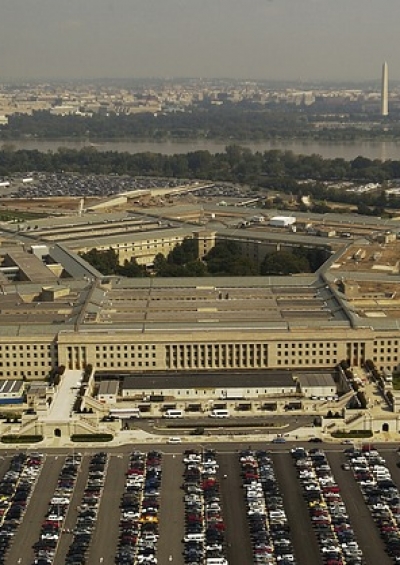“Compact with Africa”: A Critical Assessment
The Compact with Africa started off in the wrong way. High time to warn about the wrong course.
November 28, 2019

The G20 Compact with Africa (CwA) was initiated in 2017, under the German G20 Presidency that year. Conceived as part of the G20 finance track, its goal is to promote private investment in Africa, including in infrastructure.
Specifically, the Compact aims to increase the attractiveness of private investment through substantial improvements of the relevant macroeconomic, business and financing frameworks.
Economic and political goals
The official economic dimension aside, the unspoken but very real political motivation is to contain migration from Africa into Europe and to counter China’s steady advances on the African continent.
Even so, for once, it seemed that Germany had introduced a smart economic blueprint into the G20. Based on “comprehensive, coordinated and country-specific Investment Compacts” prepared by the African countries and International Financial Institutions, private investment (including in infrastructure) was to be promoted “with early private sector engagement.” So wrote the German Federal Ministry of Finance in 2017.
So far, the Compact with Africa hasn’t taken off
Just recently, and a full 30 months after the initiative’s launch, the German Chancellor Angela Merkel called the 12 African CwA partners to Berlin, to take stock of progress and to draw lessons.
Three participant countries came from emerging North Africa: Tunisia, Morocco and Egypt. The others were low-income countries that were all part of the Highly Indebted Poor Countries Initiative 20 years ago, countries with low debt tolerance and weak tax collection.
While Compact summits are largely designed as jubilation events, there is little reason to celebrate so far. Robert Kappel´s and my new study for the FES “G20 Compact with Africa: The Audacity of Hope” shows that:
• while investment conditions in the 12 African partner countries mostly improved,
• portfolio investments for infrastructure remained weak,
• foreign direct investment was lower after the CwA launch than before,
• domestic savings and investment ratios declined and
• debt ratios were rising — as most CwA countries are former HIPCs, they are notorious for low debt tolerance resulting from weak tax collection.
Granted, the Compact is only in its third year, a short period for an initiative conceived for the long haul. But the train has started going in the wrong way. Is it too early to warn now?
The African Center for Economic Transformation had diagnosed earlier this year that the reciprocal commitment of investors was not guaranteed by the CwA, resulting in an “ill-defined value proposition” for African partners.
Germany creates confusion
Despite bilateral partnerships between Germany and selected CwA countries, the investment response by German companies has remained negligible in Sub-Saharan Africa.
Following up on its own Marshall Plan with Africa, the BMZ, the German federal ministry in charge of development and cooperation, has started the Development Investment Fund for Africa in June to complement the CwA, beyond the 25(!) existing measures to foster private investment. The German Economics Ministry also jumped on the bandwagon.
However, these programs are poorly coordinated. This generates confusion for Germany´s SMEs which are a special target group for cooperation on the German side. The firms’ confusion stems from the large number of initiatives conducted by various ministries, well beyond just the BMZ.
Bureaucratic complexity
What makes things worse is that African CwA partner countries have been subject to a bewildering array of government actions and specific targets required from them – in so-called Policy Matrices.
For all 12 CwA partners combined, the total number of required government actions and policy targets as well as involved foreign partner institutions easily reached 300 in early 2018.
In many cases, the number of required actions, targets and partners has been rising with each update of the country matrix. Reflecting an unsolved principal-agent problem, the CwA initiative is rather owned by multilateral agencies, especially the World Bank´s IFC.
It is not helpful that these agencies, following their own internal logic, push their norms and indicators (such as the discredited “Doing Business” ranking) on the countries involved.
Unfortunately, G20 leaders don’t bother about key items such as prioritization or considering the severely limited government management capacities of most Compact partner countries.
No net benefits, despite all the hoopla
The deeper problem for the Compact is that private cross-border flows have rarely resulted in the sustained transformation of poor countries. Another problem is that the kind of flows emphasized by the CwA are unsuitable for fiscally weak low-income countries.
Take the plan to activate pension and life insurer assets in Western countries as well as to use blending instruments to fund infrastructure in the CwA Financing Framework.
Smart and imaginative as that sounds, apart from general investment barriers such as political instability, in the African low-income country context common project risks for infrastructure investments need to be considered.
Consider two instruments that are supposed to entice private infrastructure funding. Fiscal contingencies could burden weak public finances in countries where debt tolerance has already proven low.
Some Compact countries (Ethiopia, Ghana) have been assessed recently under “high” risk of debt distress in the IMF/WB Debt Sustainability Framework. Debt vulnerability should further mitigate the role of external private flows to fund a country if it piles up implicit public liabilities, such as in public-private partnerships.
Conclusions
1. The CwA has focussed attention on the wrong kind of flows for infrastructure funding in low income countries. At the low-income bottom of the income/capita scale, grants and soft loans, local taxes and migrants´ remittances tend to dominate the financing mix.
2. Private cross-border capital flows – mostly direct and portfolio equity or bond flows – only start to dominate the external funding mix once countries graduate to the upper-middle-income levels.
3. With its emphasis on blended finance and foreign direct investments that tends to be too capital intensive and enclaved in special zones, the CwA has confronted headwinds from the beginning. One way out of the current dilemma would be for remittances to play a more prominent role.
4. With a sizeable migrant diaspora providing skills and networks in Europe and North America, as well as remittances, all these assets — many non-financial — should be conducive to strengthening the socio-economic development of the Compact with Africa countries.
If all of these forces are looped in properly, there is a very real prospect of providing jobs and linking domestic investment to the world as well as fostering rural development.
Takeaways
The G20 Compact with Africa aims to promote private investment in Africa -- including in infrastructure.
The unspoken motivation of the CwA is to contain migration from Africa into Europe and to counter China’s advances on the African continent.
Private cross-border flows have rarely resulted in the sustained transformation of poor countries.
Investment by German companies has remained negligible in Sub-Saharan Africa.
The CwA has confronted headwinds from the beginning. One way out of the current dilemma would be for remittances to play a more prominent role.

